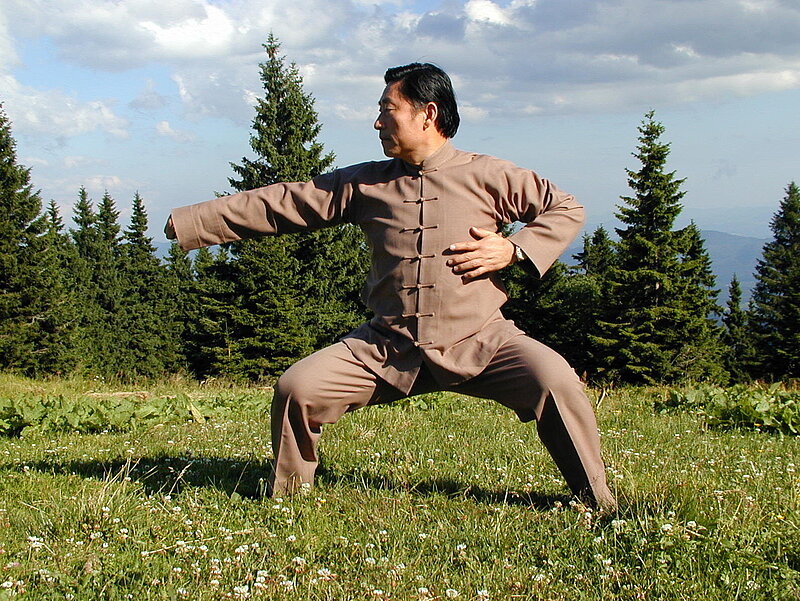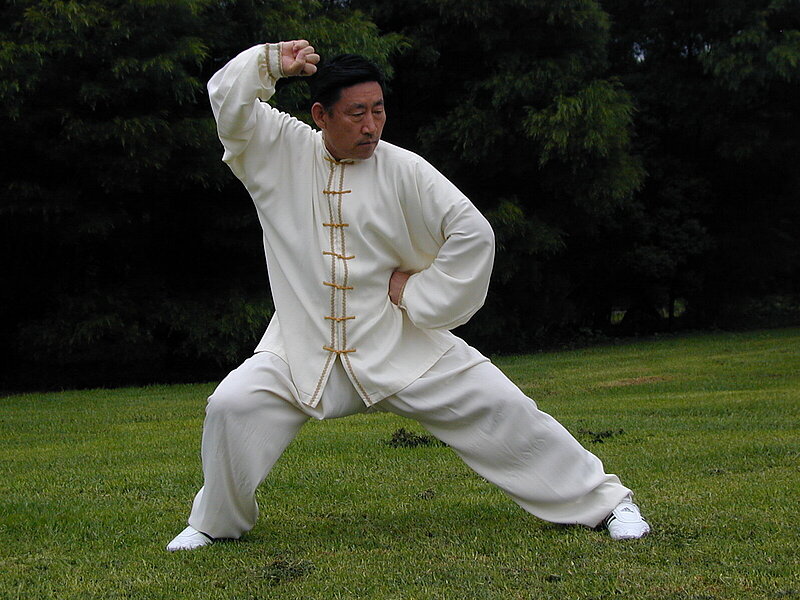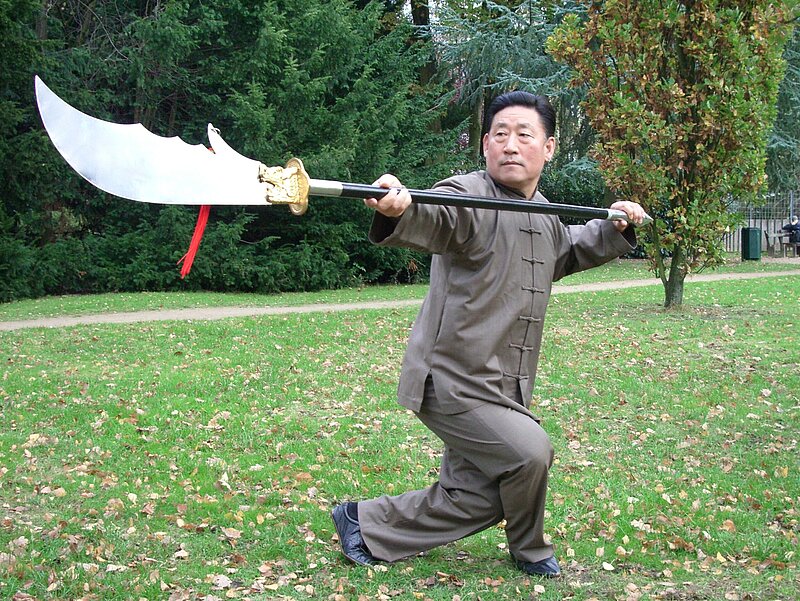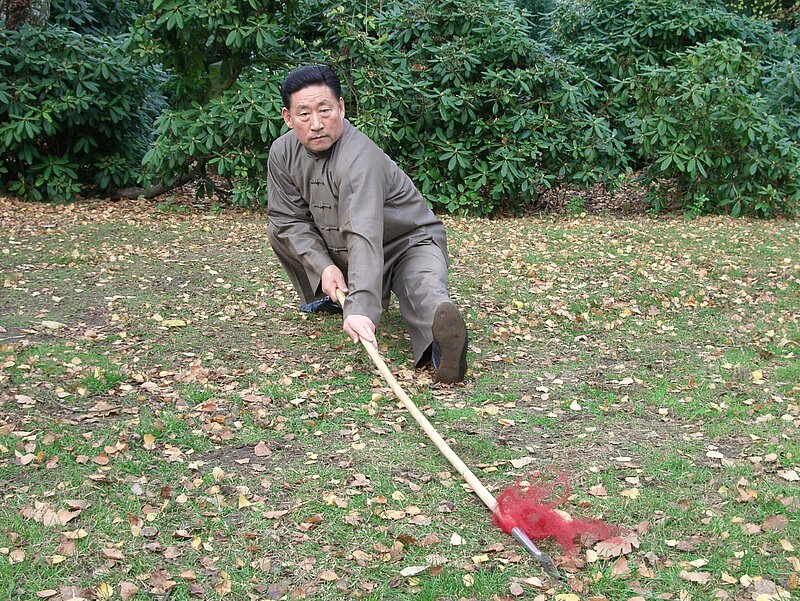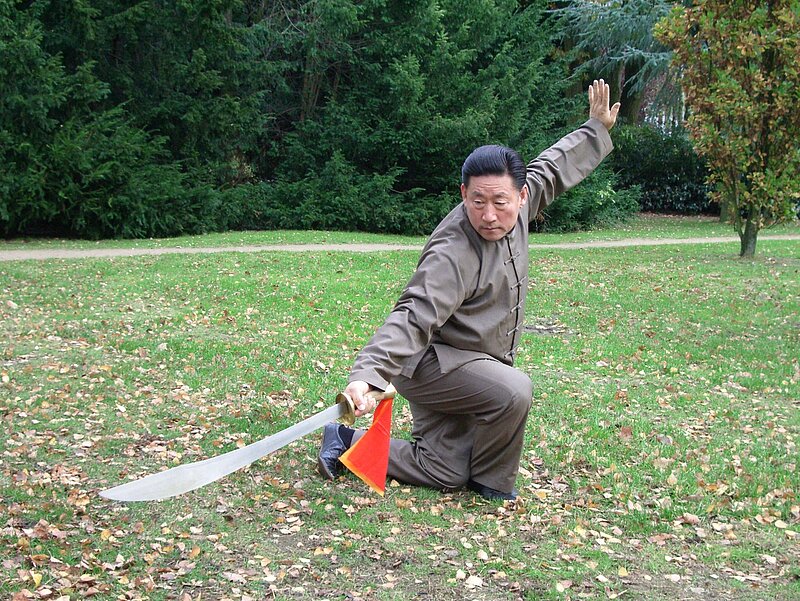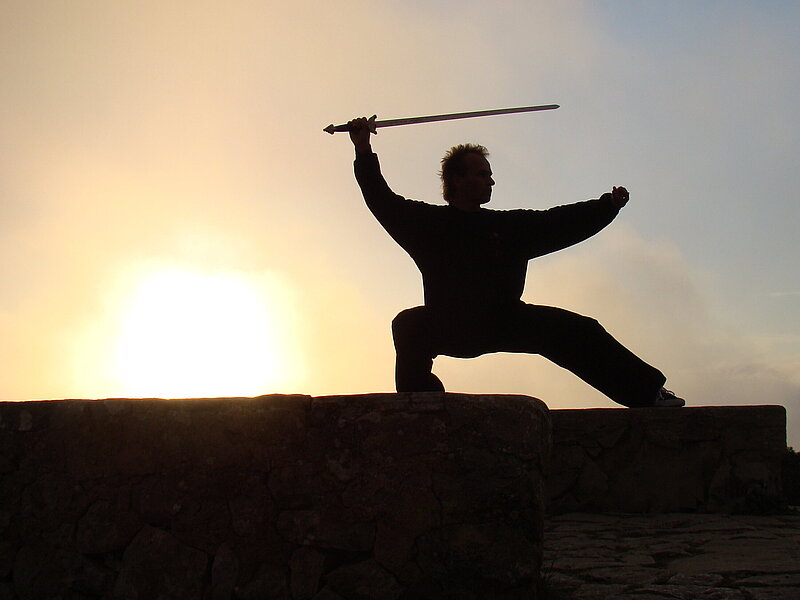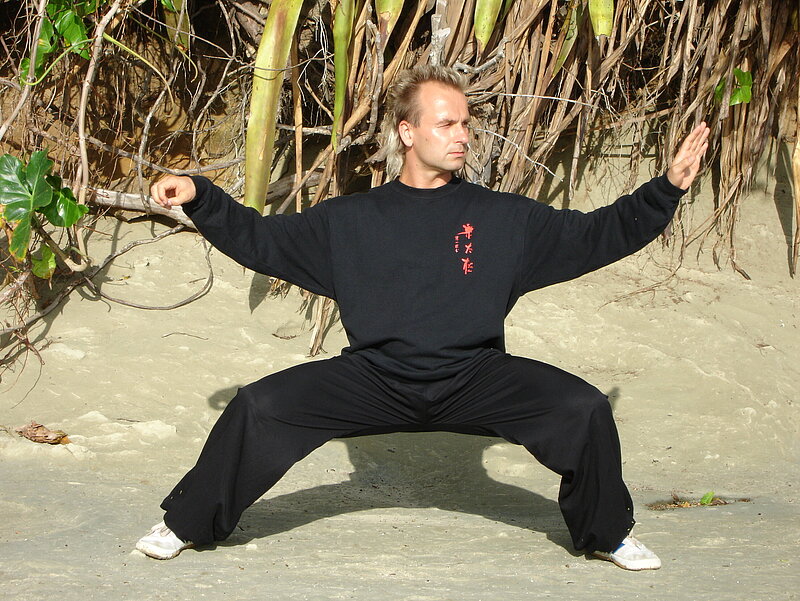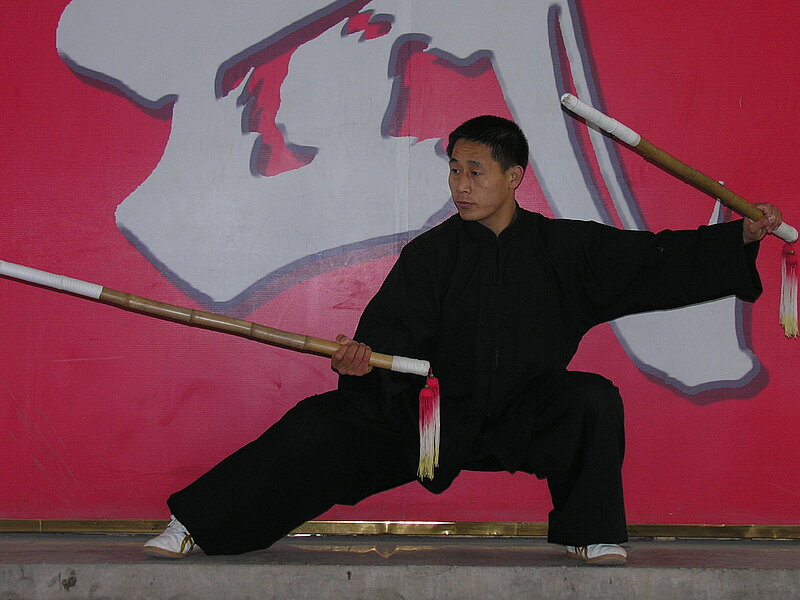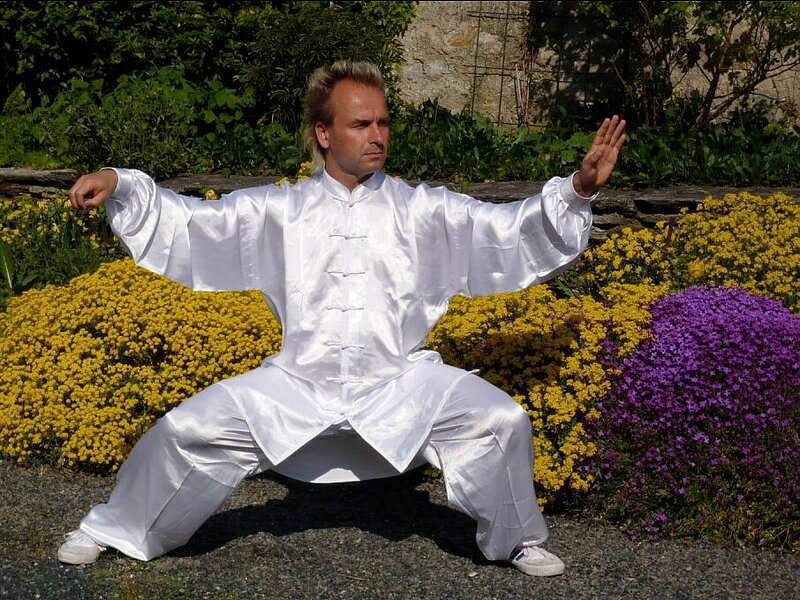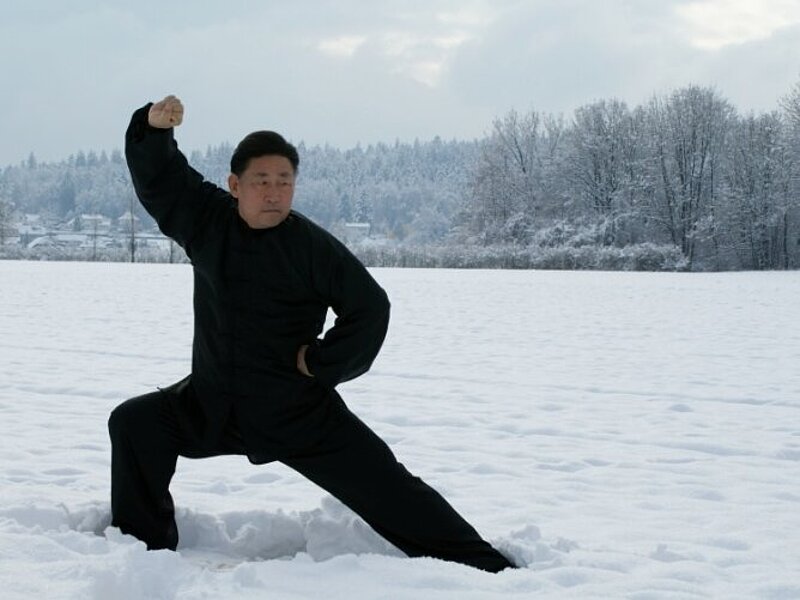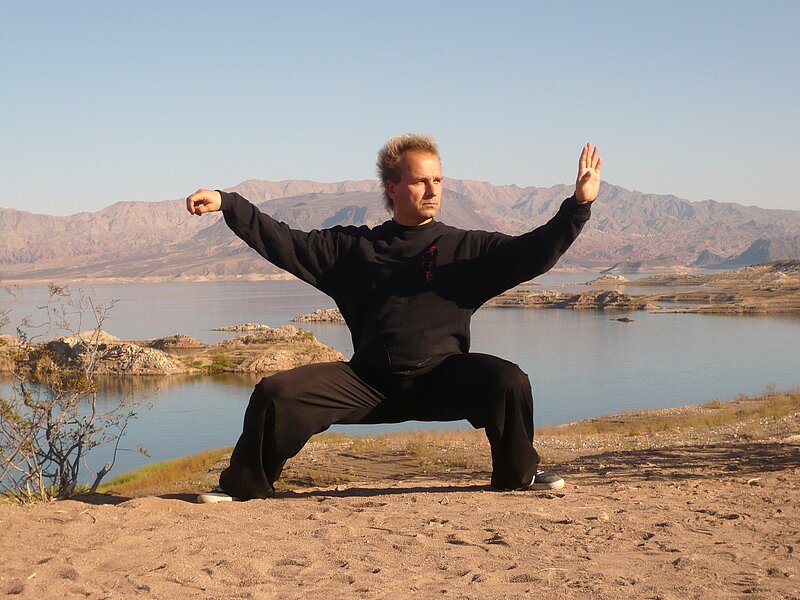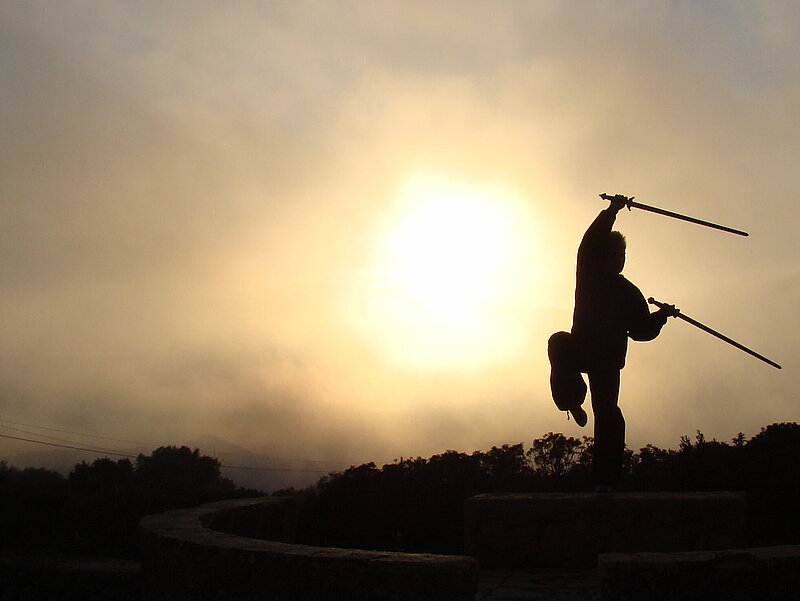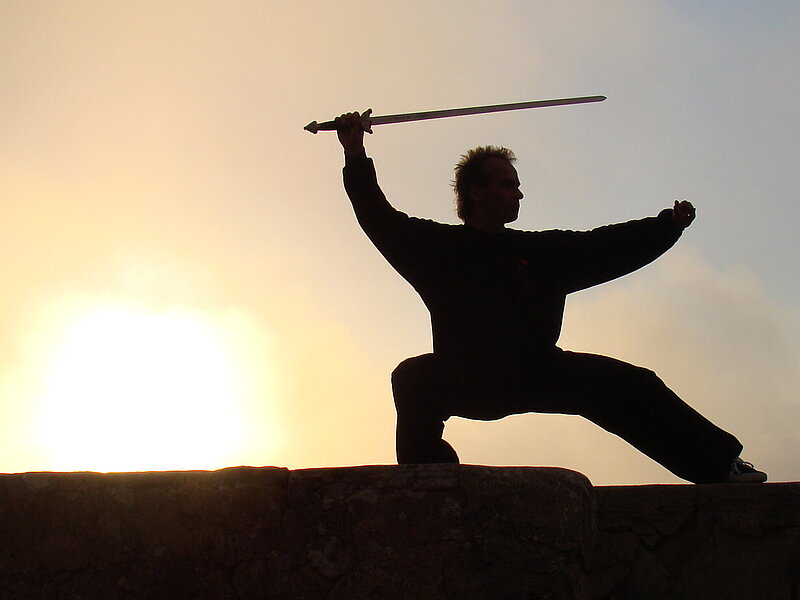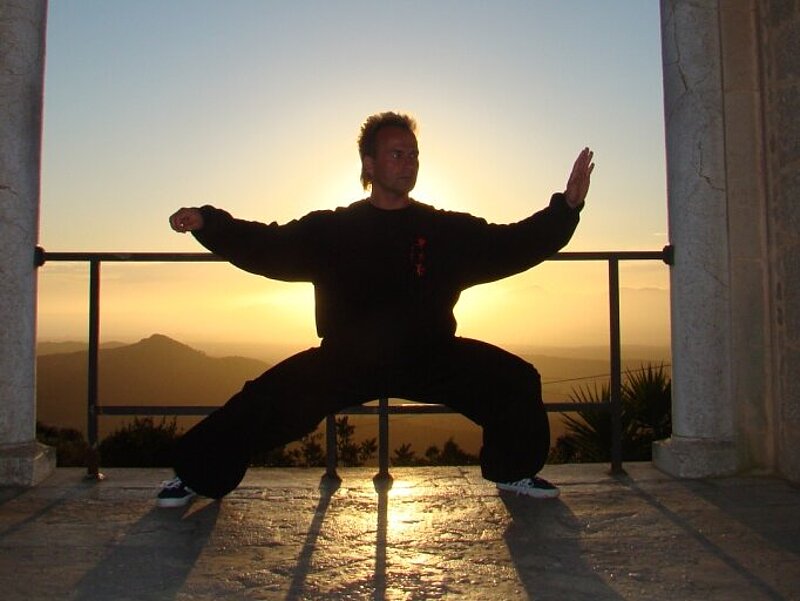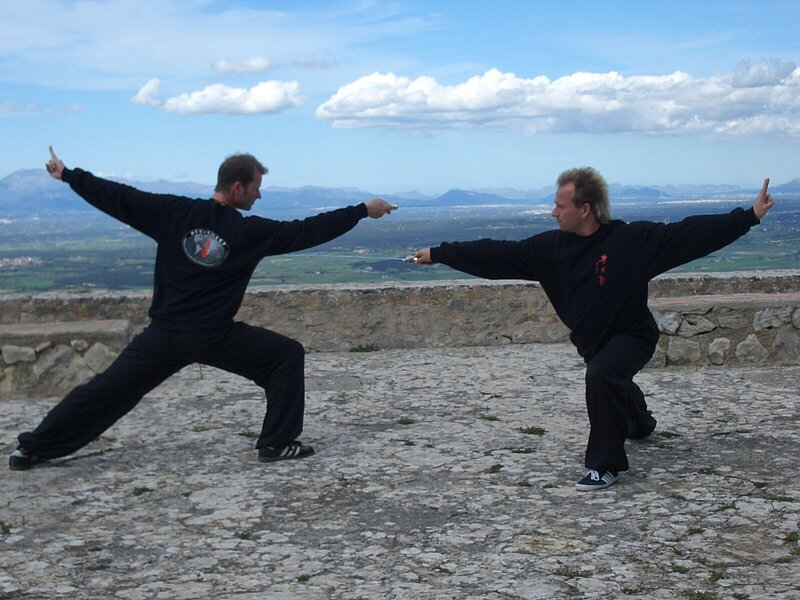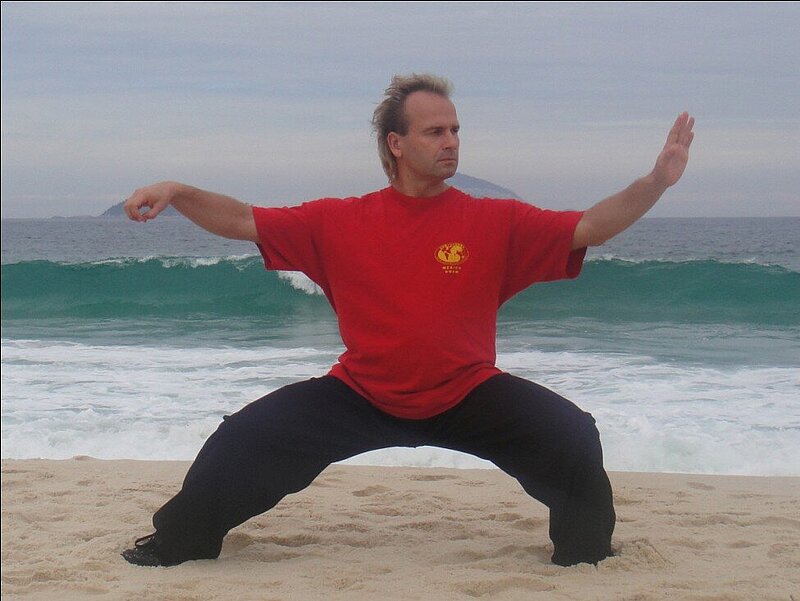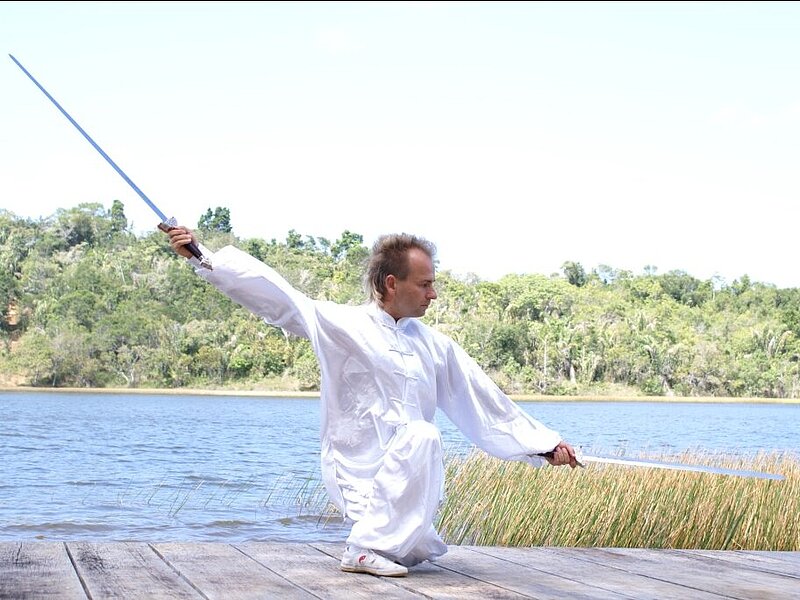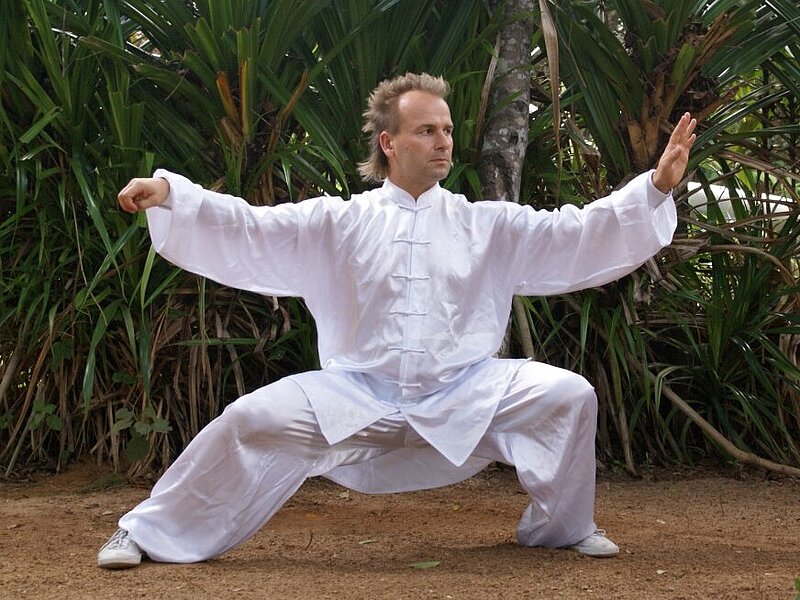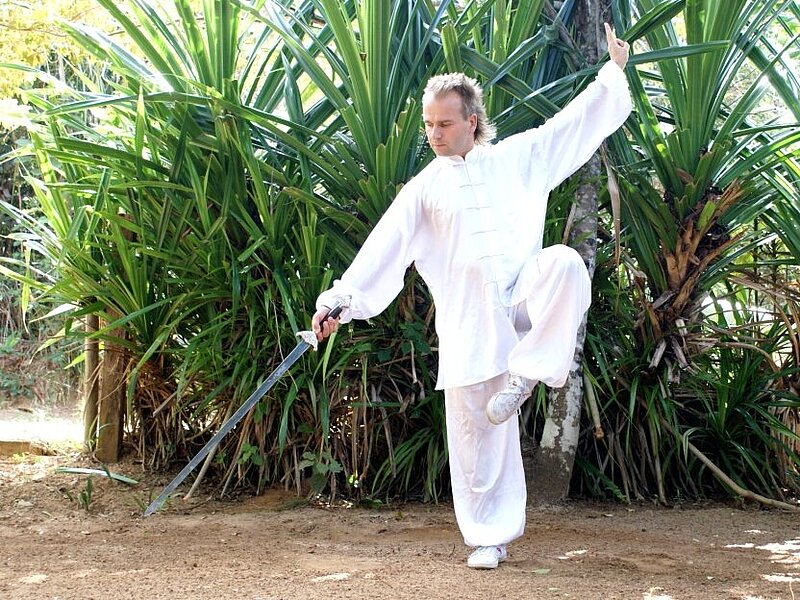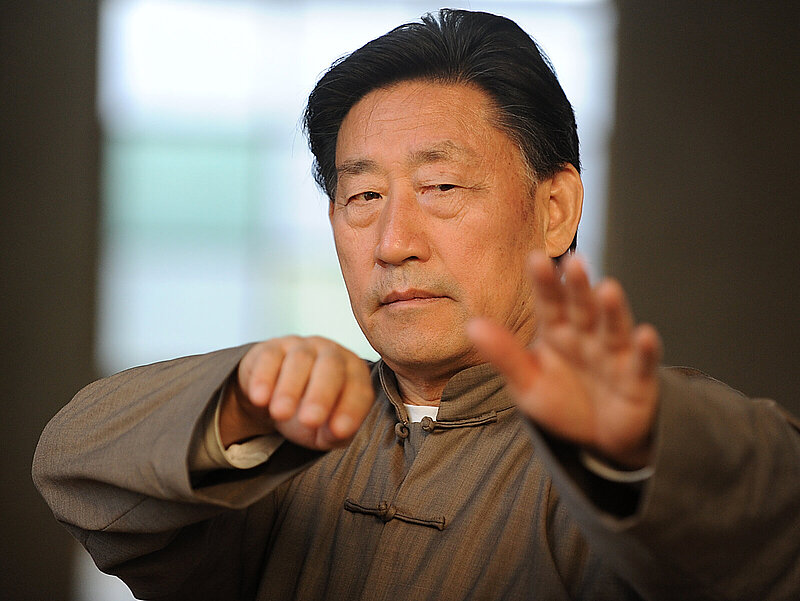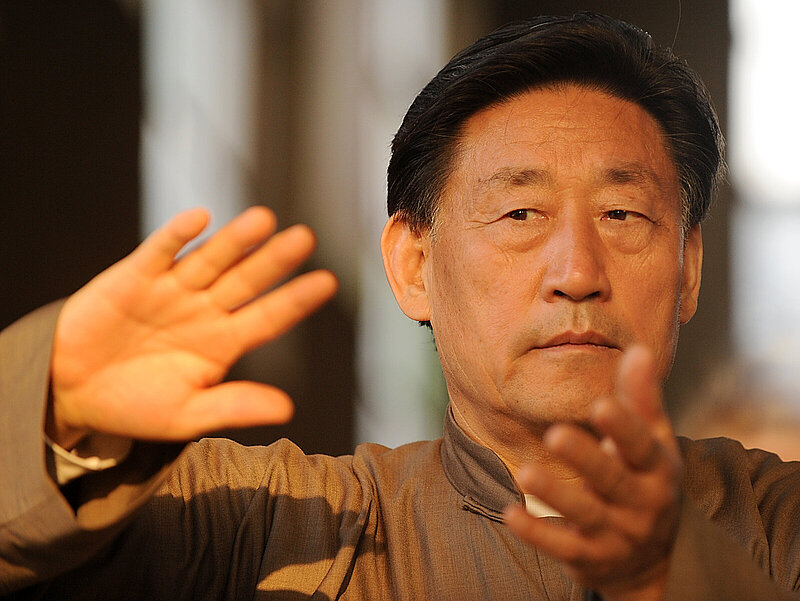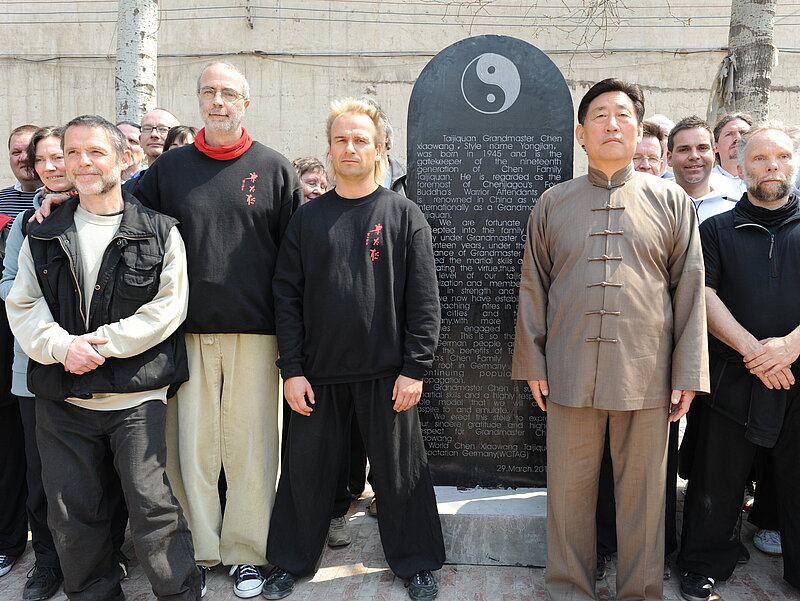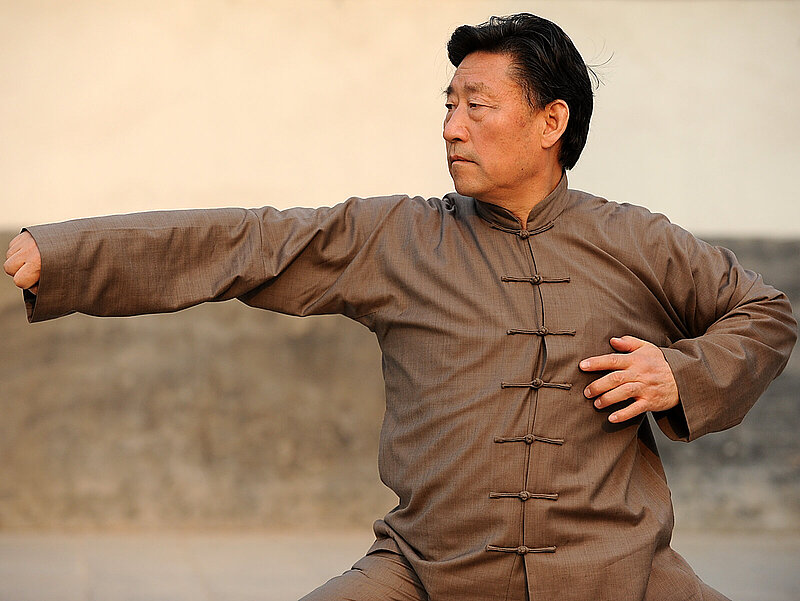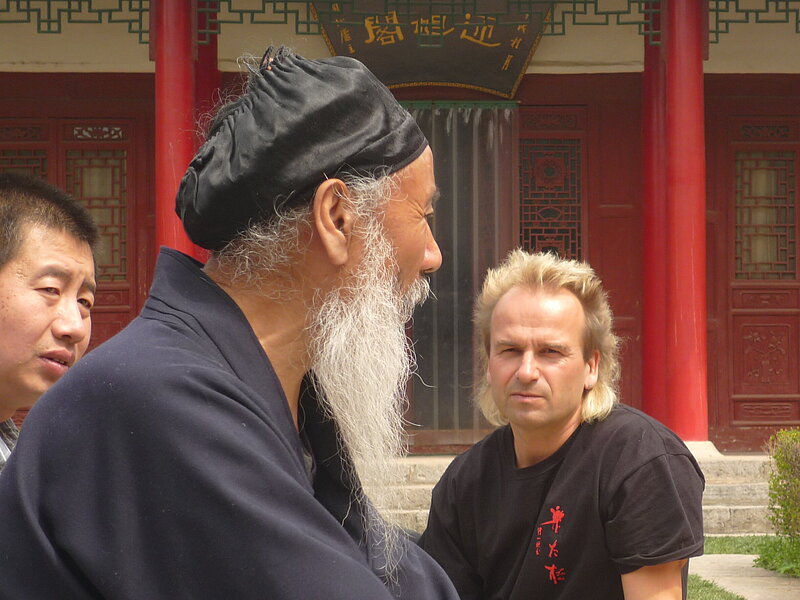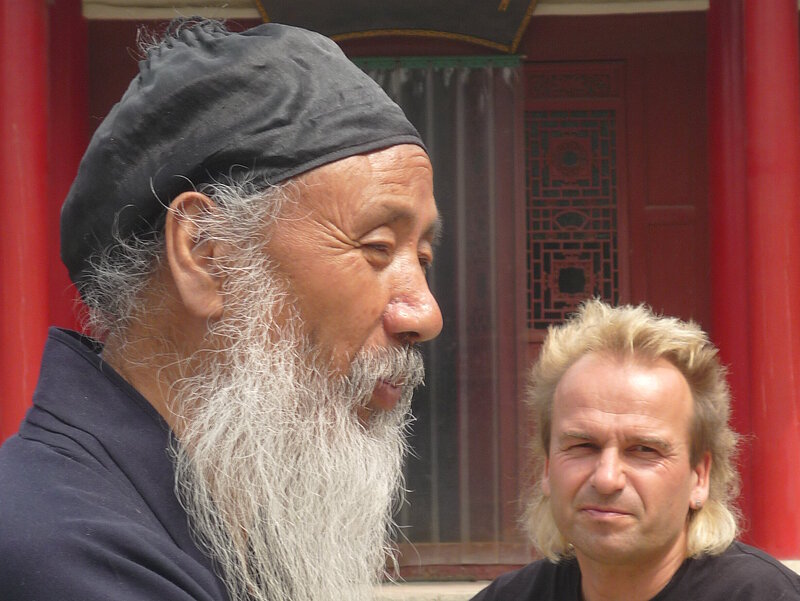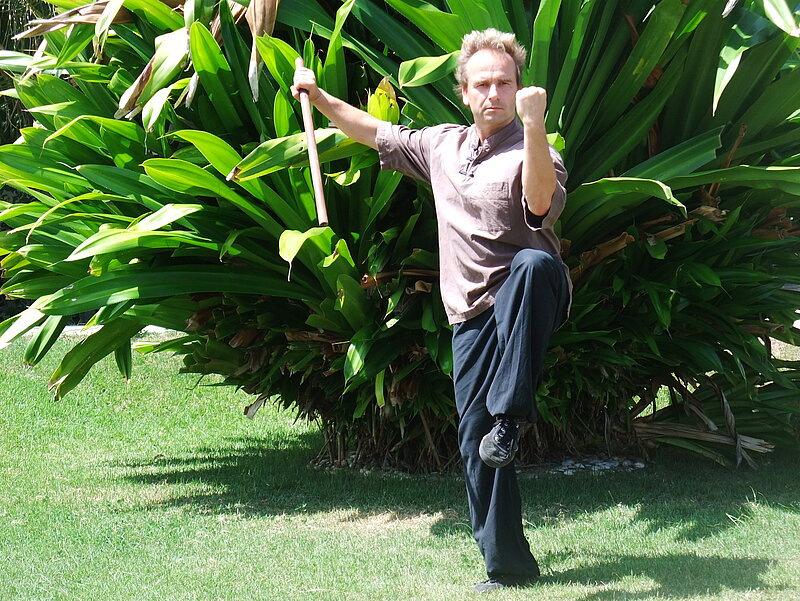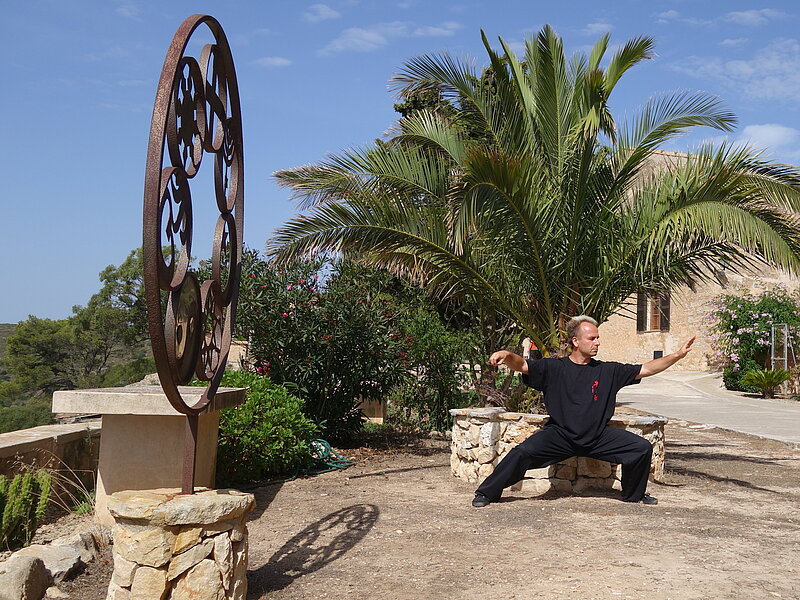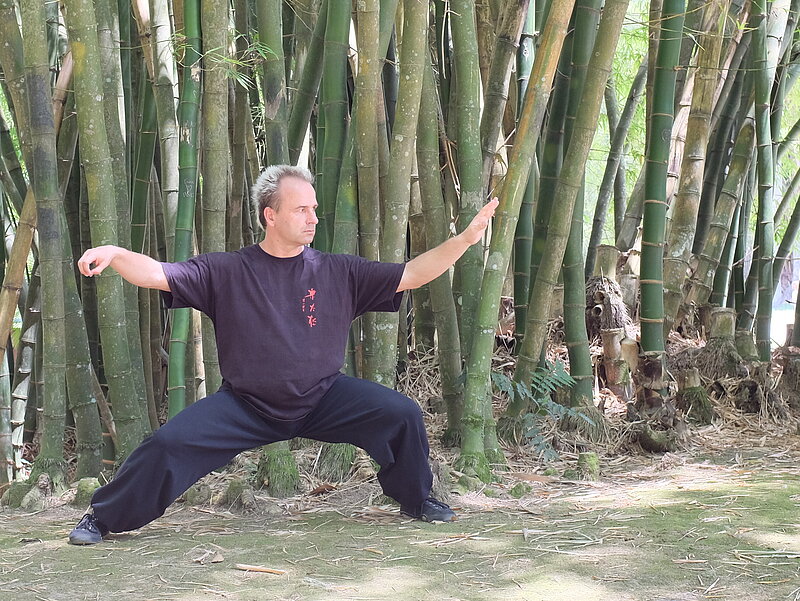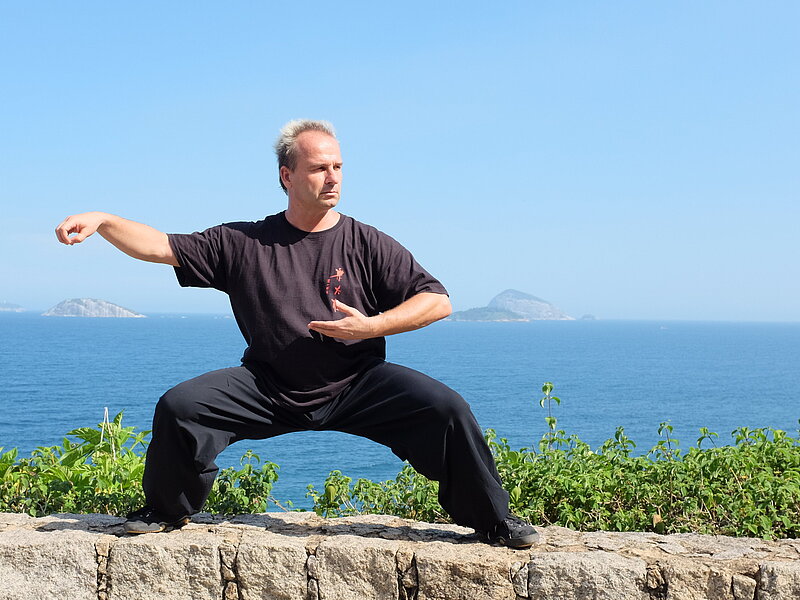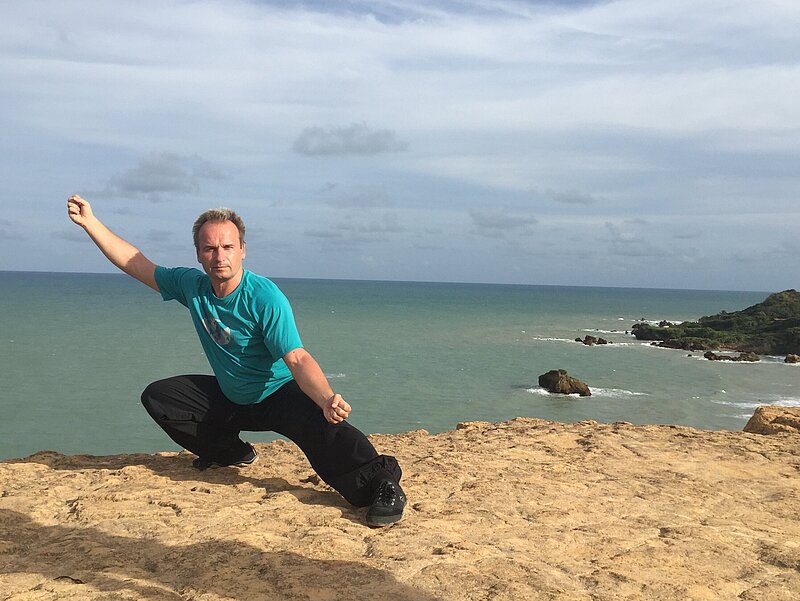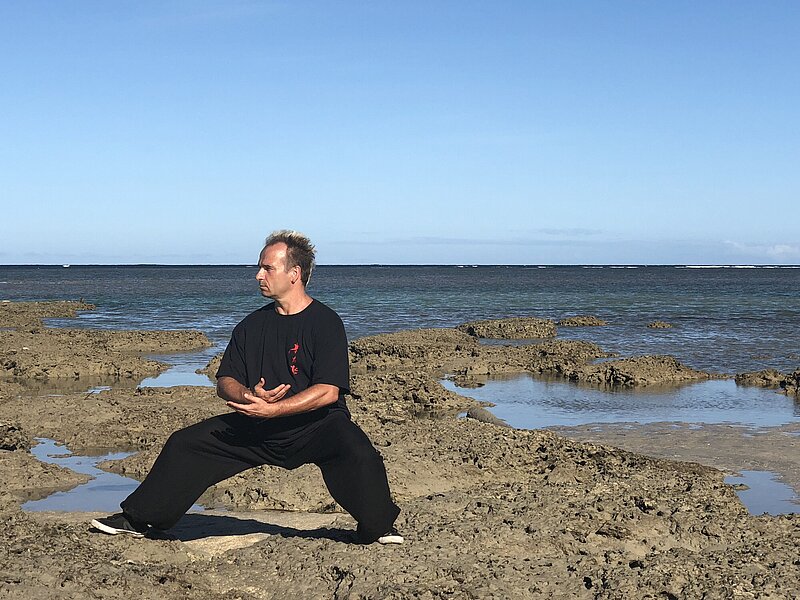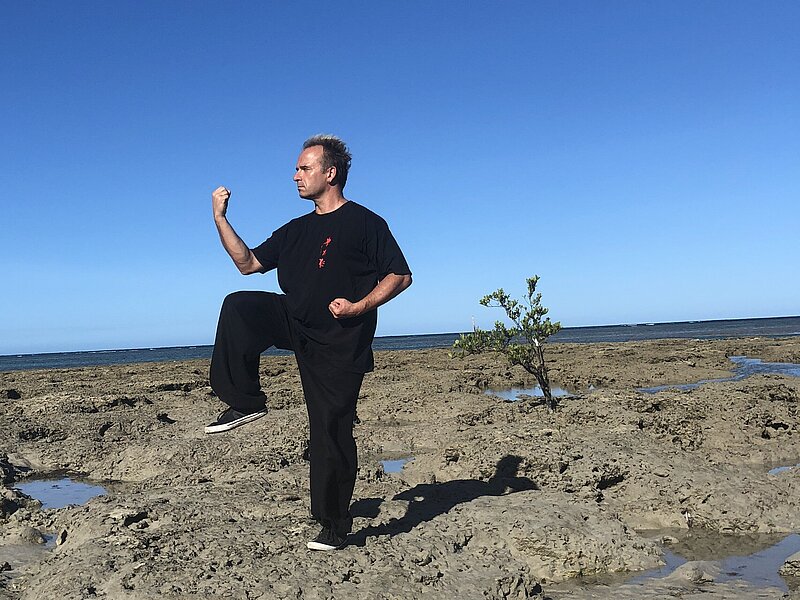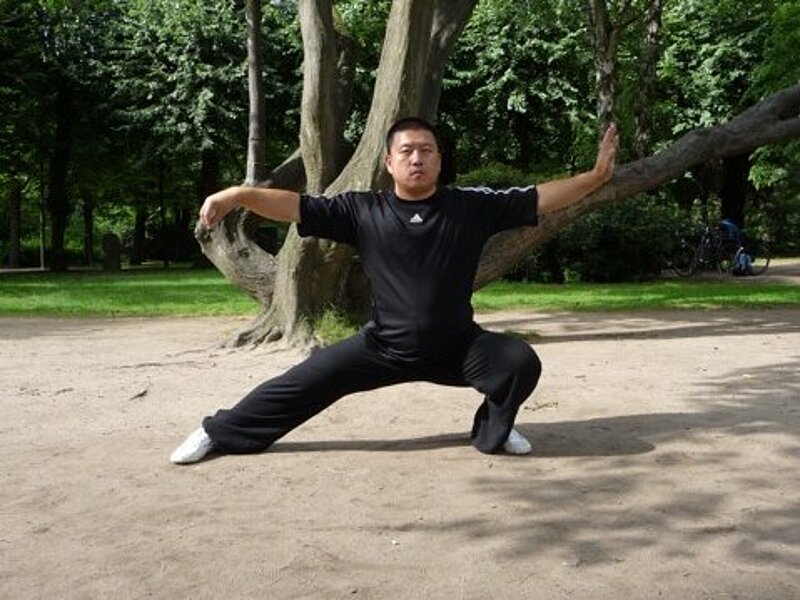Teaching Content
The classical Chen Taijquan system according to Chen Xiaowang is a completely elaborated training and exercise system. It is composed of several superordinate areas. The design and inner structure of the individual training and exercise focuses are such that each area can be learned and practised on its own. However, the full depth and variety of Chen Taijiquan can only be experienced in the interaction of all areas.
Standing Meditation 太極站桩
Structured relaxation
The "Standing Meditation" (chin. Zhanzhuang) is an exercise that is performed standing and statically for a longer period of time. It has a meditative character and strengthens the static and skeletal muscles. It promotes awareness of the body and mind. Inner and outer peace, a whole-body structure and a relationship to one's own centre of gravity (Chinese Dantian) can be experienced. It strengthens the will and promotes physical and mental stamina.
Silk Reeling Exercises 太極的蠶絲功
Harmonisation of inner and outer movement
The silk exercises (Chinese Cansigong) presuppose a basic understanding of the learning objectives of the Standing Pillar and build on these. They are the "key" to every Taijiquan movement and give it a deeper meaning. The silk exercises help to understand and optimise exemplarily different courses of force and principles of movement. They train the understanding of external movements (turning and weight shifting) and give an indication of internal force progressions. There are a total of 19 different silk exercises to practise the different aspects of harmonising internal and external movement sequences.
Open Hand Forms 太極套路

Complex movement sequences
Form training is a fixed sequence of different movement figures that flow into each other. Each individual movement figure follows the principles and learning objectives from the Standing Pillar and the Silk Exercises. In form training, complex movements are practised and refined. They train flexibility, strength, endurance and speed. They promote inter- and intramuscular coordination. They improve the sense of balance and orientation for movements in space.
Weapon Forms 太極器械
Of course, the movement principle of Taijiquan can also be applied to a wide variety of weapons and equipment. The standard repertoire of the Chen style includes:
- Sword
- Sabre
- Spear/long stick
- Halberd
- Double sword
- Double sabre
But also Taiji short sticks, the Taiji ball, the mace, the 3-metre staff and other implements or weapons can be learned.
Push Hands 太極推手
Review by a partner
The partner exercises are practised at the beginning with fixed movement sequences. The partner behaves in a cooperative and supportive way. One's own movement space is connected with the partner's movement space and even extended to it. Within this framework, one's own movement, posture and structure are checked and, if necessary, adjusted with the help of the partner. In a second step, the partner can become the opponent. Here it is important to maintain one's own calm and structure, although someone tries to disturb it.
Applications
Making sense of hand and foot positions
Chen style Taijiquan is a highly efficient martial arts system. This is also visible in the many possible applications of the individual figures from the forms. For a better understanding of individual movement sequences and the meaning of hand and foot positions, various application possibilities are demonstrated and practised. Balance and structure take a higher position in the understanding of Taijiquan. The teaching is oriented more towards principles of movement than the practice of techniques.


